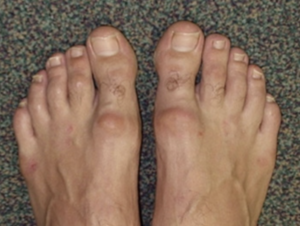COMMON CONDITIONS
Hallux Rigidus Specialist | Hallux Rigidus Pain | Hallux Rigidus Treatment IN RICHARDSON, DALLAS, GARLAND, WYLIE, MURPHY.
WHAT IS A HALLUX RIGIDUS?
Hallux rigidus is a disorder of the joint located at the base of the big toe. It causes pain and stiffness in the joint, and with time, it gets increasingly harder to bend the toe. Hallux refers to the big toe, while rigidus indicates that the toe is rigid and cannot move. Hallux rigidus is actually a form of degenerative arthritis.
This disorder can be very troubling and even disabling since we use the big toe whenever we walk, stoop down, climb up or even stand. Many patients confuse hallux rigidus with a bunion, which affects the same joint, but they are very different conditions requiring different treatment.
Because hallux rigidus is a progressive condition, the toe’s motion decreases as time goes on. In its earlier stage, when motion of the big toe is only somewhat limited, the condition is called hallux limitus. But as the problem advances, the toe’s range of motion gradually decreases and stiffness in big toe increase with the passage of time until it potentially reaches the end stage of rigidus, in which the big toe becomes stiff or what is sometimes called a frozen joint.
Bone spur big toe joint is also common, spur or overgrowth of bone occurs on the top of joint which causes limitation in movement and difficulty in bending the toe joint while walking.

WHAT CAUSES HALLUX RIGIDUS?
In many people, there is no clear reason. Hallux rigidus likely develops when there’s so much stress placed on the big toe joint when you walk. Each step you take puts a stress equivalent to twice your body weight on the toe joint.
Different reasons for hallux rigidus include:
- Overuse of the joint, for example, in laborers who stoop or squat or athletes who stress the joint. Repetitive stress on the joint can cause hallux rigidus.
- Wounds, for example, nailing the toe or hyper-extending the joint (called “turf toe” in athletes).
- Genetics, since it can run in the family. It might come from acquiring a specific foot type (like a long first foot bone) or way of walking that prompts the condition.
- Osteoarthritis, which is joint inflammation because of wear and tear on the joint.
- It is more common in females.
- Abnormalities in foot structure can also cause hallux rigidus. Such as long or elevated first metatarsal bone might increase your risk of getting hallux rigidus.
- Inflammatory diseases, for example, rheumatoid arthritis or gout.
HALLUX RIGIDUS SYMPTOMS:
Early signs and symptoms include:
- Pain and stiffness in the big toe during use (walking, standing, bending, etc.)
- Pain and stiffness aggravated by cold, damp weather
- Difficulty with certain activities (running, squatting)
- Swelling and inflammation around the joint
- As the disorder gets more serious, additional symptoms may develop, including:
- Pain, even during rest
- Difficulty wearing shoes because bone spurs (overgrowths) develop
- Dull pain in the hip, knee or lower back due to changes in the way you walk
- Limping (in severe cases)
HALLUX RIGIDUS TREATMENT OPTIONS:
Hallux rigidus pain relief can be achieved when you see a doctor as soon as possible. In many cases, early treatment may prevent or postpone the need for surgery in the future. Hallux rigidus pain can be relieved by following methods. Treatment for mild or moderate cases of hallux rigidus may include:
- Shoe modifications. Shoes with a large toe box put less pressure on your toe. Stiff or rocker-bottom soles may also be recommended.
- Orthotic devices. Custom orthotic devices may improve foot function.
- Medications. Oral nonsteroidal anti-inflammatory drugs (NSAIDs), such as ibuprofen, may be recommended to reduce pain and inflammation.
- Injection therapy. Injections of corticosteroids may reduce inflammation and pain.
Your foot and ankle consultant will examine your first metatarsal joint or big toe by its movement and based on his examination, he might order X-Ray for further details.
WHEN IS SURGERY NEEDED?
In some cases, surgery is the only way to eliminate or reduce pain. Several types of surgery are available for treatment of hallux rigidus. In selecting the procedure or combination of procedures for your particular case, we will take into consideration the extent of your deformity based on the x-ray findings, your age, your activity level and other factors. The length of the recovery period will vary depending on the procedure or procedures performed. Dr. Raymond Delpak has extensive experience in the treatment of this condition.
HALLUX RIGIDUS SPECIALIST | HALLUX RIGIDUS PAIN | HALLUX RIGIDUS TREATMENT IN RICHARDSON, DALLAS, GARLAND, WYLIE, MURPHY.
Dr. Raymond Delpak works with patients to determine the best course of action for treating foot and ankle problems. We use the most advanced techniques possible. If you would like to learn more, please visit us TX Foot and Ankle Consultants or schedule an appointment.
SUBSCRIBE TO OUR NEWSLETTER
*for updates on our medical equipment only

